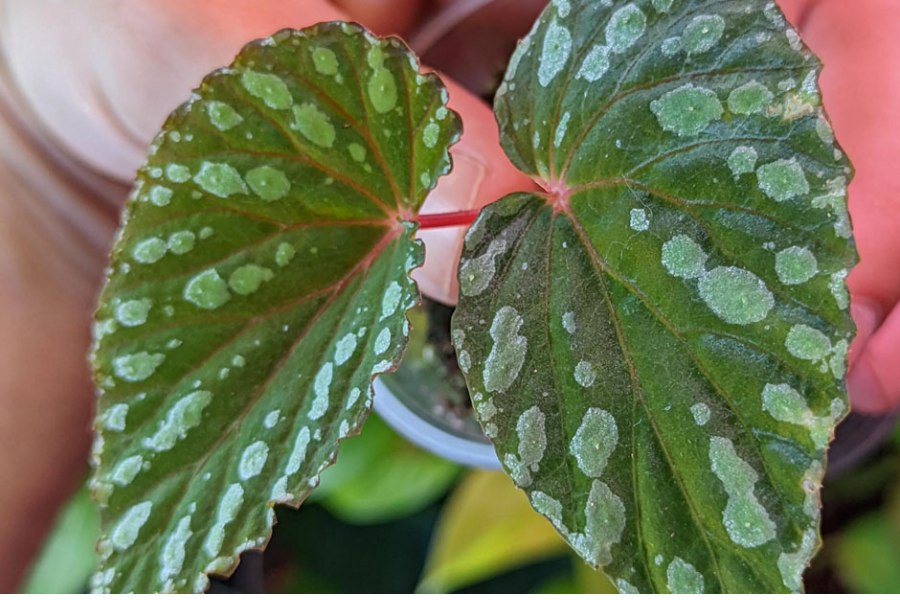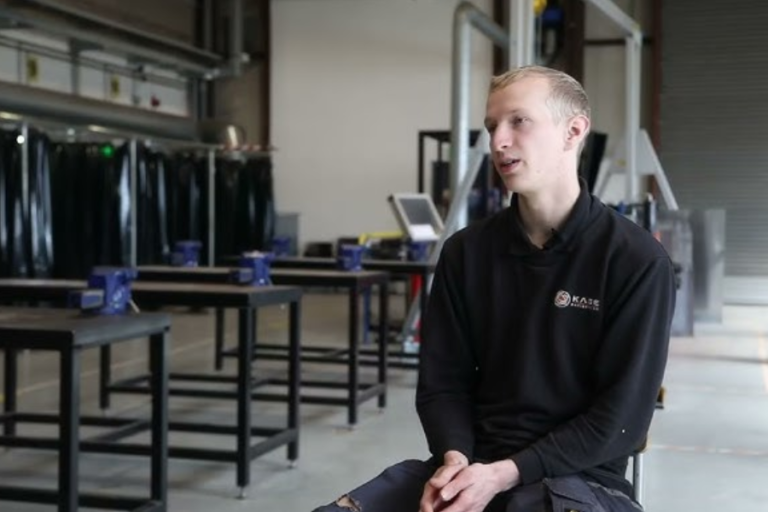Begonia Mallacoota: Transform Your Home with This Stunning Houseplant And More Explained
Begonia Mallacoota
The Begonia Mallacoota is an exquisite variety thought to be a hybrid of several begonia species. Known for its striking foliage and colorful blooms, this begonia is a favorite among indoor gardeners. Its care is relatively simple, as it thrives in bright, indirect light and enjoys consistently moist soil.
Strawberry Begonia Plant
Although its name suggests a connection to strawberries, the strawberry begonia (Saxifraga stolonifera) is not a true begonia. This charming houseplant is celebrated for its distinctive appearance and ease of care.
Appearance:
- It features light green leaves adorned with silver veins.
- The Tricolor variety displays a lovely halo around the leaf edges and has a smaller stature, but is a bit trickier to cultivate.
- As it grows, the plant develops long runners that produce clusters of leaves, which have a reddish tint and a slight fuzziness.
Growing Conditions:
- Indoors: Prefers indirect sunlight.
- Outdoors: Can serve as ground cover in areas lacking strong turf.
- Watering: Requires minimal water in winter.
- Pests: Watch out for aphids and mealybugs.
- Fungal Prevention: Avoid getting the leaves wet to reduce the risk of fungal issues.
Flowers:
In spring, the strawberry begonia produces small, rather unremarkable flowers. This fast-growing plant can also endure cooler temperatures.
Weeping Begonia
The weeping begonia (Begonia boliviensis) is cherished for its stunning cascades of delicate flowers. It’s perfect for hanging baskets and containers, allowing its trailing stems to gracefully flow downwards.
Types of Begonias
Begonias can be classified into three primary categories based on their root structures:
- Fibrous-Rooted Begonias:
- Wax Begonias (Semperflorens): Compact plants with small, glossy leaves that bear single or double flowers in various hues. They are commonly used for bedding and borders.
- Rhizomatous Begonias:
- Angel-Wing Begonias (Cane Begonias): These begonias have large, shiny leaves resembling angel wings and come in various colors, often growing quite tall.
- Tuberous Begonias:
- Trailing Begonias: Characterized by their cascading stems, ideal for hanging baskets, with an array of colors and leaf types.
Rieger Begonia
The Rieger begonia (Begonia x hiemalis) is a delightful houseplant that blooms in winter, providing a splash of color to your indoor environment.
Appearance:
These hybrids showcase vividly colored blooms that resemble tea roses, ranging from vibrant reds and pinks to bright yellows, oranges, and whites. They typically grow to a height and width of about 12-18 inches in containers.
Growing Conditions:
- Light: Provide about 14 hours of bright, indirect light daily; some direct sunlight is acceptable if the temperature stays cool.
- Watering: Avoid overwatering; check the top inch of soil and water only when dry. Keep the leaves dry to prevent fungal infections.
- Temperature: Maintain a nighttime temperature of at least 50°F (10°C) and around 70°F (21°C) during the day.
Propagation:
Rieger begonias are relatively easy to propagate. You can take stem cuttings and root them in moist soil.
Strawberry Begonia (Revisited)
As mentioned, the strawberry begonia (Saxifraga stolonifera), also known as creeping saxifrage, isn’t a true begonia but boasts fuzzy leaves and runners reminiscent of a strawberry plant. It remains a popular choice for houseplant enthusiasts due to its appealing foliage and simple care requirements.
Angel Wing Begonias
The angel wing begonia (Begonia coccinea) is a striking cane begonia from tropical South America. It features large, symmetrical leaves shaped like folded angel wings and stems that produce vibrant, drooping flowers. The leaves are decorated with metallic speckles in shades of deep green, reddish-brown, and silver.
Care Tips:
Provide bright, indirect light throughout the year, use organic-rich, moist soil (with terracotta pots to prevent excess moisture), and keep the plant consistently moist for optimal growth.
Polka Dot Begonia
The polka dot begonia (Begonia maculata), also known as Begonia maculata, is a stunning tropical perennial recognized for its eye-catching spotted leaves. Its elongated, dark green leaves are adorned with pale grey to silver spots, while the undersides boast a warm burnt orange hue.
Dragon Wing Begonia
The Dragon Wing Begonia (Begonia x hybrida) is a captivating cane-type begonia known for its unique look and resilience.
Appearance:
- This plant features long, semi-woody stems that resemble bamboo and dark green, wing-shaped leaves.
- It produces drooping yet upturned stems adorned with blooms in red, pink, or white during the growing season.
Care Requirements:
- Light: Adaptable to a range of light conditions, from full shade to full sun; partial shade is ideal.
- Temperature: Thrives in temperatures well above freezing and is perennial in USDA zones 9-11.
- Soil: A loamy, sandy potting mix with good drainage is best.
- Indoor Care: Maintain a daytime temperature of 70-75°F (21-24°C) and at least 60°F (15°C) overnight.
Summary:
The Begonia Mallacoota is a stunning houseplant known for its vibrant foliage and colorful blooms, believed to be a hybrid of several begonia species. It thrives in bright, indirect light and prefers consistently moist soil, making it an excellent choice for indoor gardening. Alongside the Begonia Mallacoota, various types of begonias, such as the Strawberry Begonia, Weeping Begonia, and Angel Wing Begonias, offer unique aesthetics and care requirements. These plants range from fibrous-rooted to rhizomatous and tuberous varieties, each with distinct characteristics. With proper care, these begonias can add beauty and vibrancy to any indoor or outdoor space.
Interesting Facts about:
- Hybrid Origins: The Begonia Mallacoota is believed to be a hybrid of multiple begonia species, showcasing a unique blend of traits.
- Easy Care: This plant is favored by indoor gardeners for its low maintenance needs, thriving in indirect sunlight and requiring moist soil.
- Diverse Varieties: The begonia family includes various types, such as fibrous-rooted, rhizomatous, and tuberous begonias, each offering unique appearances and care tips.
- Winter Blooms: Certain types, like the Rieger Begonia, bloom in winter, providing seasonal color to indoor spaces.
- Propagation Ease: Many begonias, including the Rieger variety, can be easily propagated from stem cuttings, making them accessible for plant enthusiasts.
FAQ about:
1. What are the ideal growing conditions for Begonia Mallacoota?
- Begonia Mallacoota thrives in bright, indirect light and enjoys consistently moist soil. It’s essential to avoid direct sunlight to prevent leaf burn.
2. How often should I water my Begonia Mallacoota?
- Water your Begonia Mallacoota when the top inch of the soil feels dry. Ensure the pot has good drainage to prevent overwatering.
3. Can I grow Begonia Mallacoota outdoors?
- While it can be grown outdoors in mild climates, it’s best suited for indoor environments where it can receive the right light and humidity levels.
4. What pests should I watch out for with Begonias?
- Common pests include aphids and mealybugs. Regularly check the undersides of leaves and treat any infestations promptly.
5. How can I propagate my Rieger Begonia?
- Rieger begonias can be propagated easily through stem cuttings. Simply take a cutting from a healthy plant and root it in moist soil.
6. Are there other types of begonias that I should consider?
- Yes, other notable types include Strawberry Begonias, Weeping Begonias, Angel Wing Begonias, and Polka Dot Begonias, each offering unique aesthetics and care needs.
7. What is the best temperature range for growing begonias?
- Most begonias prefer temperatures between 60°F (15°C) at night and around 70°F (21°C) during the day.
8. How do I prevent fungal issues on my begonia?
- To prevent fungal problems, avoid wetting the leaves during watering and ensure good air circulation around the plant.
Navigate the world of entertainment with expert analysis and features at ObjectiveRelease.com.






